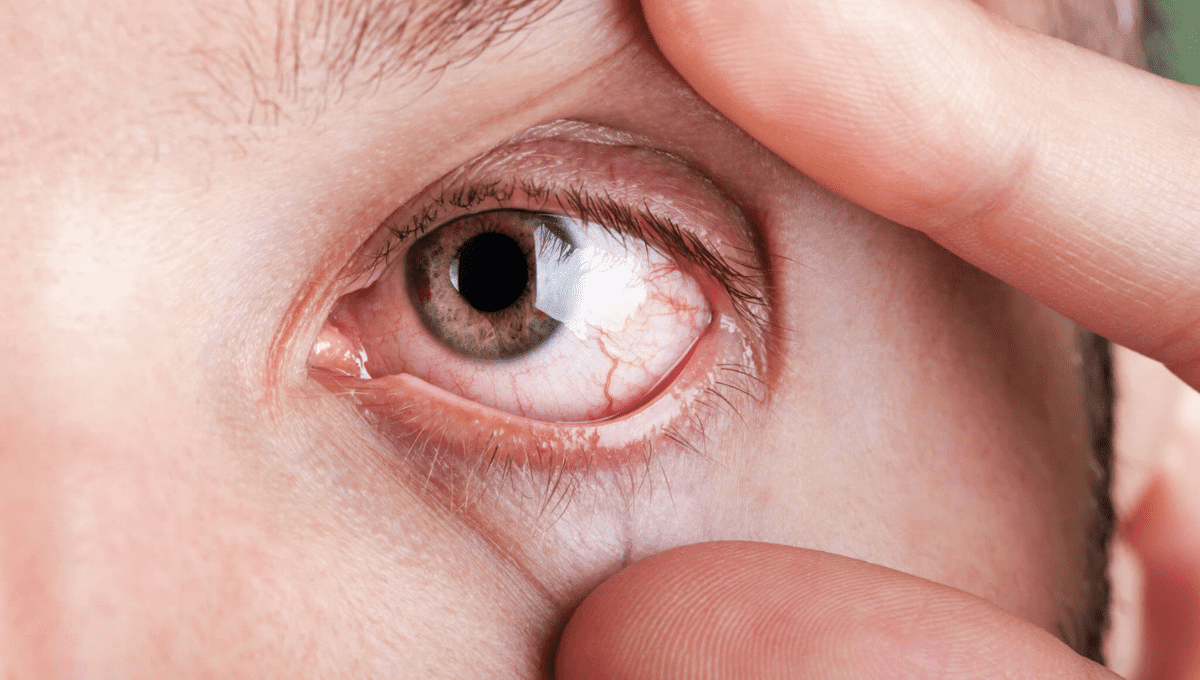U Education
Really, it’s not about us. It’s about U. Our mission is to exceed your laser eye care and cosmetic needs, and that also means at home. Our experienced and qualified doctors and staff have shared their knowledge on everything to visualize the best U.

What Are The Symptoms of Dry Eye Syndrome?
Dry Eye Syndrome is more than just an occasional irritation—it's a medically recognized condition that can significantly impact your quality of life, particularly if left untreated. At U Eye Laser Cosmetic (UELC), we prioritize early diagnosis and personalized care to preserve both your vision and comfort. If you're based in Brampton, Vaughan, or Scarborough and have experienced chronic eye discomfort, it's important to understand the symptoms of Dry Eye Syndrome and what they may signal about your ocular health.
Key Symptoms of Dry Eye Syndrome
Dry Eye Syndrome presents with a variety of symptoms, which can range from mildly annoying to severely debilitating. Recognizing these signs early can help you avoid complications and preserve your eye health:
- Stinging or Burning Sensation: A persistent irritation that often feels like there's something in your eye.
- Scratchiness or Grittiness: A gritty or sandy feeling, as if debris is stuck under the eyelid.
- Redness and Inflammation: Visible irritation or bloodshot eyes are common, especially in dry environments.
- Excessive Tearing: Ironically, dry eyes often lead to reflex tearing as your eyes attempt to compensate for the lack of lubrication.
- Light Sensitivity (Photophobia): Discomfort or pain when exposed to bright light.
- Blurry or Fluctuating Vision: Inconsistent visual clarity throughout the day.
- Eye Fatigue: Difficulty keeping your eyes open, especially after screen time or reading.
- Difficulty Wearing Contact Lenses: Lenses may feel uncomfortable, dry, or irritating.
- Pain or Discomfort During Cosmetic Eye Procedures: Patients undergoing treatments such as blepharoplasty or SmoothEye® may experience heightened symptoms if dry eye is unmanaged.
If you’re experiencing any of the above symptoms regularly, it’s time to seek professional evaluation.
Variability of Symptoms: Intermittent vs. Chronic
Dry Eye symptoms can vary greatly from person to person. Some individuals may experience intermittent discomfort triggered by environmental conditions or screen use, while others may face chronic symptoms that persist despite lifestyle changes. Regardless of frequency, consistent symptoms warrant a comprehensive dry eye assessment to prevent long-term complications such as corneal damage or visual decline.
Common Causes and Risk Factors
Dry Eye Syndrome arises from deficiencies in tear quality or quantity. Tears are composed of three essential layers—lipid, aqueous, and mucin—and dysfunction in any layer can result in inadequate eye lubrication. Major contributors include:
- Age-related decline in tear production and meibomian gland function
- Extended screen time, which reduces blink rate and leads to tear film instability
- Hormonal changes, especially in postmenopausal women
- Medical conditions, such as diabetes, rheumatoid arthritis, and thyroid disorders
- Eye surgeries, including LASIK and PRK, which can temporarily disrupt tear production
- Environmental exposure to air conditioning, wind, or dry climates
Impact on Daily Activities
Unmanaged Dry Eye Syndrome can interfere with many daily functions, including:
- Driving at night, especially due to glare sensitivity
- Reading for extended periods, as eye strain builds quickly
- Computer or phone use, due to reduced blinking and eye fatigue
- Wearing contact lenses, which become increasingly uncomfortable
These limitations can reduce productivity, comfort, and overall quality of life.
Visual Disturbances and Long-Term Implications
Beyond discomfort, dry eye can cause serious visual disturbances such as fluctuating clarity, halos around lights, and increased light sensitivity. These issues not only affect day-to-day activities but can also compromise the outcomes of refractive surgeries like LASIK and PRK. Ensuring optimal tear film stability before undergoing these procedures is essential for safe and predictable results.
Types of Dry Eye: Aqueous-Deficient vs. Evaporative
Dry Eye Syndrome generally falls into two main categories:
- Aqueous-Deficient Dry Eye: Caused by insufficient tear production from the lacrimal glands.
- Evaporative Dry Eye: Typically linked to Meibomian Gland Dysfunction (MGD), where the lipid layer of the tear film is inadequate, leading to faster evaporation.
Many patients experience a mixed form, and accurate classification is critical to effective treatment.
When to Seek Specialized Care
Dry Eye symptoms should never be dismissed as mere nuisances. Left untreated, the condition can lead to corneal scarring, infections, and vision loss. If symptoms persist for more than a few days or worsen over time, it's vital to seek specialized care. At UELC’s Dry Eye Institute, we offer advanced diagnostics such as TearLab® Osmolarity, LipiView®, and Oculus Keratograph, followed by customized treatment plans involving:
- UltraView DEL® Dry Eye Laser
- Autologous serum and PRP therapy
- Prescription anti-inflammatory eye drops
- Meibomian gland treatments like iLux® and deep gland decompression
Conclusion: Early Action Leads to Better Outcomes
Dry Eye Syndrome may start with minor symptoms but can rapidly progress if ignored. Whether you're pursuing clearer vision through LASIK or seeking youthful rejuvenation around the eyes with cosmetic treatments, managing dry eye is a foundational step toward success. At UELC, we don’t just treat symptoms—we uncover root causes and deliver individualized solutions backed by cutting-edge technology and expert care.
If you're experiencing dry, irritated eyes, don’t delay. Book your consultation at UELC’s Dry Eye Institute in Vaughan, Brampton, or Scarborough today. Your eyes will thank you.
UELC – Where Vision Meets Precision.
.svg)

%20(1).png)